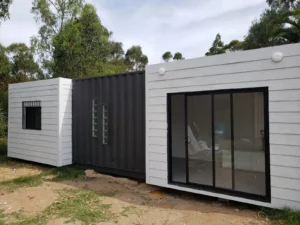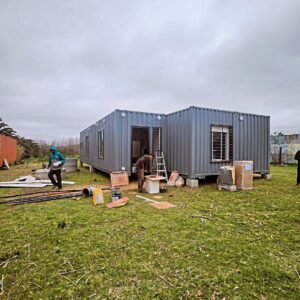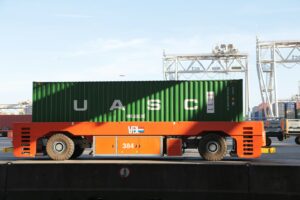The choice of flooring for container homes depends on various factors such as climate, budget, design, and personal preference. Here are some options to consider:
- Wood: A natural, warm, and inviting material that imparts a rustic or modern touch depending on the type and finish. It can be installed on a base of OSB boards or plywood, secured to the container’s metal floor. Keep in mind that wood requires periodic maintenance and may be susceptible to damage from moisture or insects.
- Ceramic: A durable, resilient, and easy-to-clean material that offers a wide range of colors, textures, and shapes. It can be installed over a layer of mortar or adhesive, leveling the container floor. Note that ceramic may feel cold to the touch and could be prone to breakage from impacts or expansions.
- Vinyl: A synthetic, cost-effective, and versatile material that mimics various finishes such as wood, stone, or marble. It can be laid on a base of foam or cork, providing thermal and acoustic insulation, adhered to the container floor. Be aware that vinyl may wear out with use and could release toxic substances when heated.
- Cement: An industrial, sleek, and minimalist material that creates a seamless effect with the container walls. It can be applied directly to the container’s metal floor, smoothing and polishing the surface. Note that cement may develop cracks over time and has the potential to convey cold and humidity.
While these are some of the most common flooring options for container homes, there are numerous other possibilities, including cork, bamboo, carpet, or microcement. The key is to select the flooring that best aligns with the specific needs and preferences of each project.




